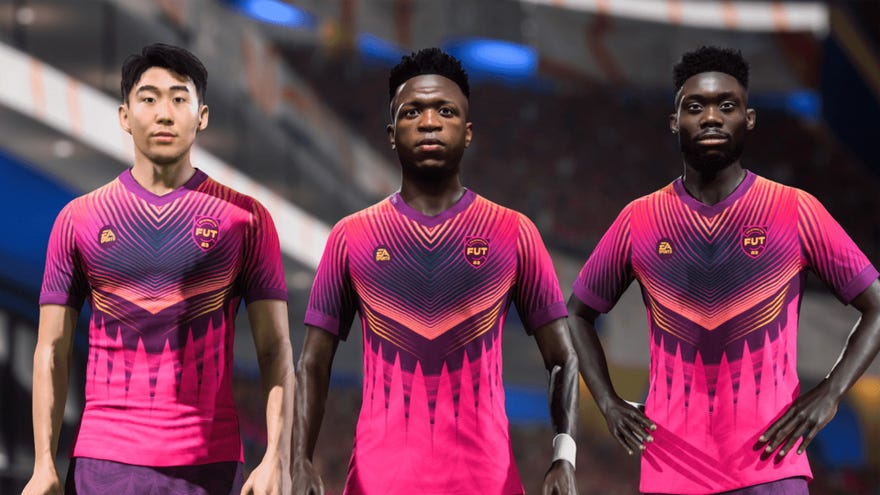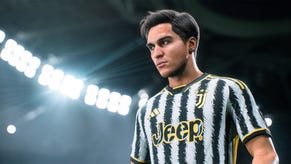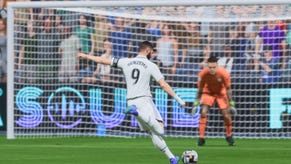FIFA 23 chemistry: How does chemistry work in FIFA 23?
Learn about the new chemistry system in FIFA 23 Ultimate Team
Want to learn about the FIFA 23 chemistry system? The Ultimate Team chemistry system has undergone huge changes in FIFA 23, but one key element remains the same. Having high chemistry will boost your squad, giving them raised attribute scores that make them perform better and help you win games. It'll also allow chemistry styles to work at full effectiveness, which is key if you want to make players Lengthy. Those boosts are crucial if you want to succeed in Weekend Leagues and FUT Rivals, so you need to learn about the new FIFA 23 chemistry system.
In this guide, we explain how the new FIFA 23 chemistry system works, breaking down the changes from previous games, how to earn chemistry in FIFA 23, and how Icons, Heroes, and substitutes affect your team chemistry. We'll also provide a full list of Chemistry Styles, along with the buffs they grant to a player with a maximum chemistry rating.
On this page:
- How does chemistry work in FIFA 23?
- How to gain chemistry in FIFA 23
- FIFA 23 Chemistry Style list
- Best Chemistry Styles in FIFA 23
How does chemistry work in FIFA 23?
The most substantial change to chemistry in FIFA 23 is the removal of positional links. In previous FIFA games, players would only affect the chemistry of those in an adjacent position, meaning that your attackers and defenders would rarely link together to raise chemistry. In FIFA 23, players build chemistry across the pitch, so you won’t see loads of lines scattered about while in the squad builder.
Each player in your squad has three diamonds at the bottom left corner of their card, which indicates their chemistry score on a scale of 1-3. Overall squad chemistry is much simpler as a result: in FIFA 23, your maximum squad chemistry is 33, and based on the total amount of chemistry points from each individual player. So, if all of your players have a chemistry rating of 3, then you will have a total squad chemistry rating of 33, as there are 11 players in a squad.
It’s worth noting that if you place a player in the wrong position, they will not gain any chemistry.
FIFA 23 also makes the chemistry system much more positive. Low chemistry scores will no longer negatively influence a player’s stats, meaning that the attributes on their card will not drop when played in a low chemistry squad. Chemistry will only add to your player’s attributes.
That means if you get one of the best players in FIFA 23, you can still use them without making the rest of your squad worse. The Loyalty system is also gone, so you don’t need to worry about playing a certain amount of matches to attain max chemistry with a player.
How to gain chemistry in FIFA 23
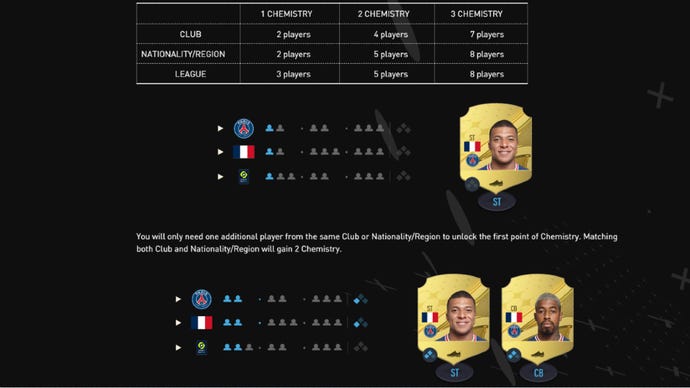
Earning chemistry is incredibly simple in FIFA 23, as it only depends on the amount of players from the same clubs, leagues, and nations that you have in your squad. Bear in mind that a player must be played in the correct position to earn chemistry in FIFA 23. A player in the wrong position will have a chemistry rating of 0 until you move them or change their position.
In FIFA 23, you can earn chemistry by increasing the amount of players you have from the same club, league, or nation in your starting XI. The image above shows the explanation from EA's official post, but we’ll break down how to gain chemistry in FIFA 23 below.
Club chemistry in FIFA 23
In FIFA 23, matching players from the same club grants chemistry points. Below, we'll list the amount of players from a single club you need to earn chemistry points:
- 1 chemistry point: 2 players
- 2 chemistry points: 4 players
- 3 chemistry points: 7 players
Nation chemistry in FIFA 23
Players that share their nationality with others on the squad will also gain chemistry, although the thresholds are slightly different. Below, we'll list the amount of players from a single nation you need to earn chemistry points:
- 1 chemistry point: 2 players
- 2 chemistry points: 5 players
- 3 chemistry points: 8 players
League chemistry in FIFA 23
The final way to increase chemistry is through shared leagues. This is a little easier to fulfil, as it allows you to pull from a wide pool of players. Below, we'll list the amount of players from a single league you need to earn chemistry points:
- 1 chemistry point: 3 players
- 2 chemistry points: 5 players
- 3 chemistry points: 8 players
So, you could get max chemistry with your squad by having them all come from the same nationality. However, you can also stack points from various criteria. For example, look at the three ways to earn one chemistry point. You need to have two players from the same club or league, or three players from the same nation. If you use three players that share all three criteria - meaning they all play for the same club, league, and nation - then this will fulfil all three. These chemistry points stack, so each of these players will have a total chemistry rating of three. Since FIFA 23 has removed positional links, you can spread these players across the pitch without worrying about negative effects to chemistry.
How do heroes and icons affect chemistry in FIFA 23?
As in previous FIFA games, Ultimate Team heroes and icons automatically have the maximum chemistry rating of 3 in FIFA 23. They also have a larger impact on the thresholds mentioned above. FUT heroes are worth twice as much when counted towards their league, while icons are worth double when counted towards their nation. For example, the Muller icon card will count as two players from Germany, potentially offering a massive boost to other German players in your squad. This makes heroes and icons incredibly valuable in Ultimate Team.
How do substitutions affect chemistry in FIFA 23?
Once you start a game in FIFA 23, your chemistry score is locked and will not change. This means you can make changes to formations, tactics, and even player positions without it taking a toll on your overall chemistry rating. This also means that any substitutions that come onto the pitch during a game will not benefit from any chemistry bonuses, as chemistry only affects the starting XI. Your subs won't receive negative impacts, as chemistry no longer decreases your player attributes, but they won't gain any bonuses.
FIFA 23 Chemistry Style list
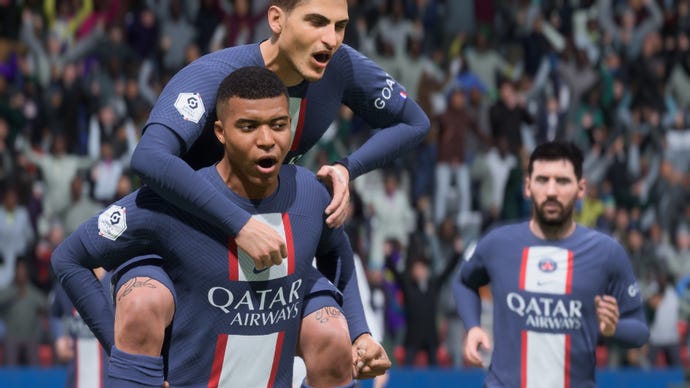
Chemistry Styles are cards that you can apply to players in FIFA 23 Ultimate Team to alter their stats. Below, we'll list every FIFA 23 Chemistry Style and the attributes they increase:
- Basic - Small upgrade to everything
- Sniper - Shooting, Physical
- Finisher - Shooting, Dribbling
- Deadeye - Shooting, Passing
- Marksman - Shooting, Dribbling, Physical
- Hawk - Shooting, Pace, Physical
- Artist - Passing, Dribbling
- Architect - Passing, Physical
- Powerhouse - Passing, Defending
- Maestro - Passing, Shooting, Dribbling
- Engine - Passing, Dribbling, Pace
- Sentinel - Defending, Physical
- Guardian - Defending, Dribbling
- Gladiator - Defending, Shooting
- Backbone - Defending, Physical, Passing
- Anchor - Defending, Physical, Pace
- Hunter - Shooting, Pace
- Catalyst - Passing, Pace
- Shadow - Defending, Pace
- Basic (GK) - Small upgrade to everything
- Wall (GK) - Diving, Kicking, Handling
- Shield (GK) - Reflexes, Kicking, Sprint Speed
- CAT (GK) - Positioning, Reflexes, Acceleration
- Glove (GK) - Handling, Diving, Positioning
Best Chemistry Styles in FIFA 23
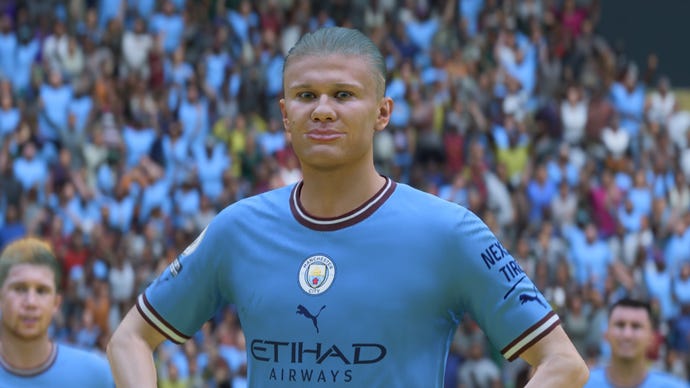
Giving a player a Chemistry Style that suits their position is a sure way to get a big upgrade, but you'll need to know the best Chemistry style for each position. Below, we'll list the best Chemistry Style for each position in FIFA 23:
Best Chemistry Style for Strikers
Below, you can find the best Chemistry Style for strikers in FIFA 23:
- Architect
- Hunter
- Deadeye
- Sniper
- Hawk
- Marksman
Lengthy is a special category of players that allows them to gain immense speed while sprinting across the pitch, making them some of the best players in FIFA 23. You can often make a player Lengthy by using the Architect Chemistry Style, making it the best for strikers. If your player is already Lengthy, consider using Hunter for its boost to Pace and Shooting. Deadeye and Sniper are also very strong, as they can improve Shot Power and Long Shots by a huge 15 points respectively. Hawk can be strong thanks to its boost to Pace, but it wastes most of its points in a +15 boost to Volleys. Marksman takes the bottom spot due to its low spread of points across Shooting, Dribbling, and Physical.
Best Chemistry Style for Midfielders
Below, you can find the best Chemistry Style for midfielders in FIFA 23:
- Architect
- Artist
- Maestro
- Engine
- Powerhouse
Since it is often regarded as the best Chemistry Style to make players Lengthy, Architect is the best Chemistry Style for midfielders. However, if it isn't enough to turn a player Lengthy, then consider Artist for its boosts to Passing and Dribbling instead. Powerhouse finds itself at the bottom here, as the Defending boosts won't help if you're trying to create opportunites for forwards and move the ball towards the opposing box. Of course, the exception here is CDM, who might benefit from Powerhouse if you like them to sit in your third.
Best Chemistry Style for Defenders
Below, you can find the best Chemistry Style for defenders in FIFA 23:
- Shadow
- Anchor
- Guardian
- Backbone
- Sentinel
- Gladiator
Shadow earns top place here thanks to its boosts to both Defending and Pace. Those are undoubtedly the two most important attributes for a defender, allowing them to keep up with the best strikers and win the ball back with ease. Anchor comes next, as it offers upgrades to Pace, Defending, and Physical. The Pace upgrade is less than that given by Shadow, but the Physical boost makes up for that. Gladiator takes the bottom spot due to its Shooting boost, which doesn't prove relevant for a defender.
Best Chemistry Style for Goalkeepers
Below, you can find the best Chemistry Style for goalkeepers in FIFA 23:
- Glove (GK)
- Basic (GK)
- Wall (GK)
- Cat (GK)
- Shield (GK)
Glove takes the top spot, as it improves Handling, Diving, and Positioning. These are three incredibly important stats for a goalkeeper, with Positioning and Diving proving particularly important. However, it fails to improve Reflexes, which is perhaps the most important GK attribute. This is why Basic takes the second spot, as it provides a minor upgrade to every GK stat. Cat and Shield come at the bottom of the list, due to their wasted slots on Acceleration and Sprint Speed. These stats are rarely relevant for a goalkeeper, and would be much better suited elsewhere.
That wraps up our guide on how chemistry works in FIFA 23, which means you should now be well-equipped to do some SBCs. If you want a hand, take a look at our Around the World, First XI, Puzzle Master, and Seven League Boots SBC solution guides. You might even earn some Team of the Week cards, or the dynamic Ones to Watch which you can track using our FIFA 23 OTW tracker. If you’d rather play career mode, take a look at our FIFA 23 wonderkids guide to find the young players with the highest potential. In you're still considering whether to get this year's game, make sure to learn about other changes to Ultimate Team and the introduction of crossplay with our page on everything we know about FIFA 23.
